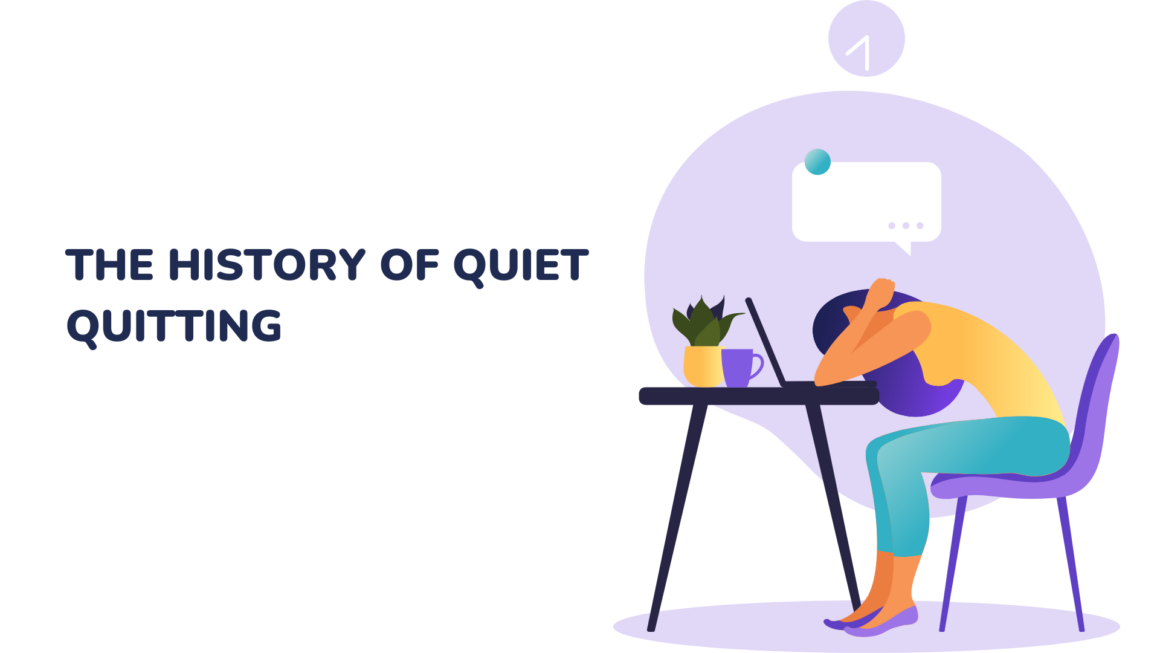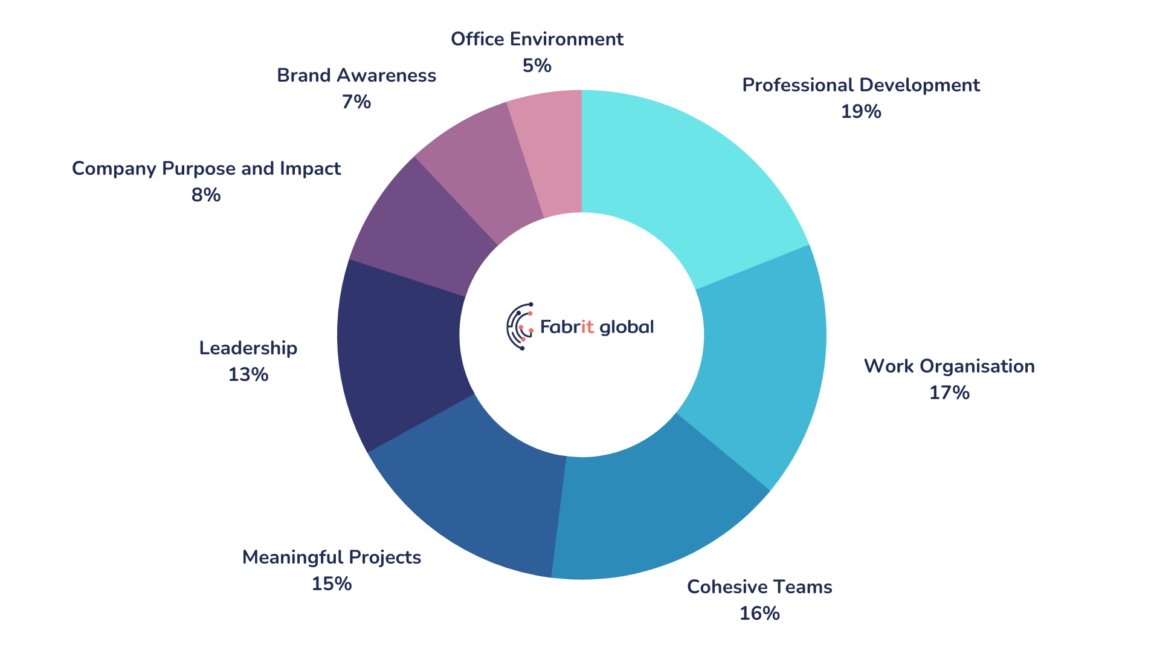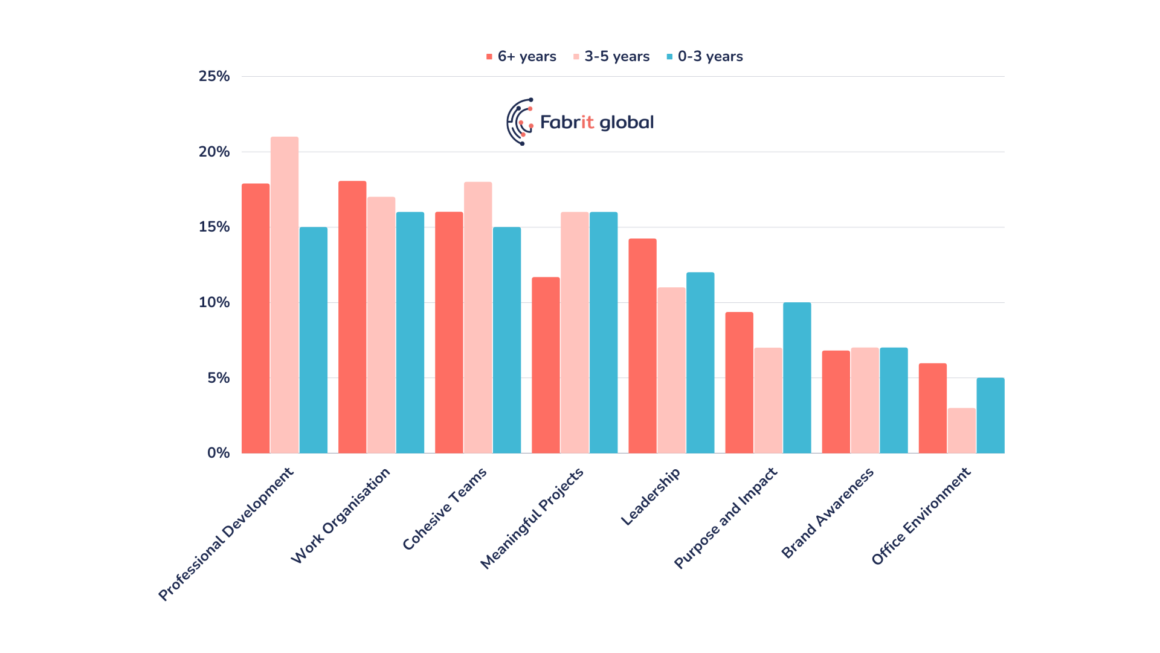It may seem that the term Quiet Quitting has already been discussed one too many times, and most of you already got tired of it. Although at a first glance it may seem like just another catchy trend, to some degrees it kinda is. But this also shows how the labour market is changing rapidly, in a direction that our parents might not have even dreamt of.
Thus, in this article, we aim to look into the perspectives, history and a general understanding of the subject, but also on how to tackle Quiet Quitting, based on some early scientific research, and some interesting insights we picked from our own “internal kitchen”.
Table of Contents

What is Quiet Quitting?
Quiet Quitting is a societal trend characterised by the decline of work involvement, reduced employee engagement to the bare minimum, or visibly showing less investment in the role.
The term “quiet quitting” has shown an increase from non-existent to 18,000% from August to October 2022. So, by now, everyone has stumbled across it.
This worldwide talked-about phenomenon has encountered many subtle nuanced representations. Some describe quiet quitters as employees who are committed to not putting in the extra work as a passive-aggressive reaction; some think that the disengaged employees are showing signs of burnout, while some call it a fake trend.
This concept can very well be seen as the opposite side of the “quiet firing” coin, where employers treat employees poorly so that they’ll leave.
Whatever the case is, it’s time to call “quiet quitting” real.
Why? Because people have not stopped talking about it, especially on social media.
1,421 LinkedIn users follow the #quietquitting, while Instagram has over 11.000 public posts using the same hashtag.
So let’s find out how we got here.

The history of Quiet Quitting
In 2020, together with the start of the Pandemic and remote work, the productivity levels have increased and so have the number of extra hours that have been worked. People were locked inside the house, making it harder for them to detach from work.
On top of that, the hustle culture encourages workers to work more than normal hours.
However, one can only stay productive for so long and, as the lockdown started to fade, so did the motivation to dedicate our lives to work.
Even though the term “quiet quitting” wasn’t in our business jargon yet, everyone has experienced a variation “of lying flat” or at least knows someone who has. Though it hides behind an apparent Gen Z slang, the discussion became relevant for every generation because it leads to a bigger topic, one that has been addressed in many ways, which is employee well-being. It is a mentality that no longer subscribes to the work hustle that generations such as Millennials and Baby Boomers have promoted and incorporated.
A study run by Gallup has shown that work engagement levels in workers younger than 35 have dropped by six percentage points from 2019 to 2022.
But when and where did this media craze start?
The popularisation of the term began on TikTok, with a video uploaded by a 20-something engineer named Zaid Khan. He narrates the video, talking about quitting the idea of going above and beyond for your job. Thousands of people resonated with this video and started a spiralling social media trend.
This turned into a generational debate, with older generational representatives like Kevin Oleary calling it cancer to our culture. Others have pointed the finger at quiet quitters because they portray themselves as victims of the system.
But this discussion is much more than a generational one. Another whiplash of the Lockdown was also the Great Resignation, which affected the labour market worldwide.
We live in unprecedented times where companies have to fight to keep their employees, struggle to hire new ones and thus, lower their expectations.
Consider it as a work-life balance manifesto.
Today, the opinions about this concept are so spread out, that studies addressing the root cause of this phenomenon have already made their way into the mainstream online world.
Studies about Quiet Quitting
One should investigate even further and look at the leadership pillars inside the companies that have been facing quiet quitting.
A longitudinal study run by Harvard Business on 2,801 managers, who were rated by 13,048 direct reports has shown that employees tend to be more engaged if their managers promote the extra mile mentality while also understanding others’ needs.
It is easy to say that the workers have just become “lazy”, instead of looking at the root causes.
But can we only blame the managers or companies?
The truth is, inside every company, there are people who detach easier from work, who focus on getting their tasks done and don’t go the extra mile. It may be due to the fact that they are disengaged by the company, work only to put bread on the table, or that they simply want to focus more on their personal life.
So what can we do about actively disengaged employees?

Tackling Quiet Quitting
With the rise of this trend, quitting your job has become an open subject nowadays.
We believe that “quiet quitting: your job is not the solution. Actually, quiet quitting is worse than quitting. Here is why:
Engaging in it means that you no longer want to grow and develop, but you are actually choosing to stay in an environment that is detrimental to you. You choose to waste your time by not adding value to the job you are doing but most importantly, not adding value to yourself.
In addition, we should take into consideration the emotional and mental implications of intentionally holding back on your capabilities by choosing to lay flat.
As for the companies who are facing this, the important thing is to have honest and open conversations with employees, track their engagement levels and understand what motivates them individually.
But one can also acknowledge the fact that there will always be outliers, and that is a risk every company takes.
However, Galloup suggested promoting accountability inside the teams for every individual performance, so they understand how they contribute to a larger purpose for the organisation.
Galloup also suggests that managers need to create accountability for individual performance, team collaboration and customer value, and employees must see how their work contributes to the organisation’s larger purpose.
Additionally, they recommended that managers should analyse and improve employee performance by dedicating 15 to 30 minutes for every employee per week.
Easier said than done. We must not forget that companies are made up of people. Thus, even managers can become unmotivated trying to keep everyone on track.
So…should we hire more people who have the skills to lead? Probably yes. But the lack of people in the job market is one of the main setbacks. It is a cycle that must break starting with the companies, by understanding human limitations and trying to work together WITH them, not against them.
Our Take on Quiet Quitting
At Fabrit we don’t want to offer a clear recipe for how this can be solved because the truth is there is no universal solution. But we do believe that an assessment of the problems and accountability in the workplace could be a good starting point for an honest discussion.
What we did is take a close look at the motivation pillars inside the company and work with them.
Good employee experience is one of our core reasons for existence, therefore we are confident that having a meaningful conversation about any risen situation is the first step in preventing such issues.
Employees that resonate and identify with company values have more reasons to become engaged at their job.
At Fabrit, we listen to our people, and we understand that different persons can value different key motivational drivers.
This is why we have created our own work motivation survey, helping us understand what our employees value most from the work experience.
We intentionally left out the financial and flexibility aspect of the employee motivation experience. As other work motivation studies suggest, money can be one of the key factors but not the only one. Factors like the working environment and working conditions, professional progression, relations with leadership, or sense of purpose influence how people perform at their job.
Looking to find out how our motivational pillars are valued by the people at Fabrit, we gathered insightful data.

As the work motivation survey shows, what employees value more when working with a company is Professional Development (19%), Work Organisation (17%) and Cohesive Teams (16%). Being part of meaningful projects (15%) and the importance of healthy Leadership (13%) follow closely to the first 3 values, while the quality of the office environment (5%), Brand awareness (7%) and the company’s purpose and impact (8%) seem to be less of a priority.
When it comes to measuring work motivation based on people’s years of experience, we discovered more interesting facts.

In this case, the results were somewhat unitary. For more senior people (6+ years) Work Organisation was less important than Professional Development by only 0,6%. The latter was voted more important than Cohesive Teams by 3,8%.
For people ranging from 3 to 5 years of experience Professional Development seems to be the most important motivation when choosing a job, followed by Cohesive Teams and Work Organisation. The difference between Professional Development and Cohesive Teams is 2,8%, while the difference between Professional Development and Work Organisation is 3,8%.
On the other hand, the percentage difference between Cohesive Teams and Work Organisation is only 0,1%.
Lastly, people at the beginning of their career considered that Professional Development is the most important pillar of motivation, followed by Meaningful Projects, Cohesive Teams and Work Organisation tying in at 17%.
What we can take from this, is that people value workplaces in which they can grow. They find motivation in professional development opportunities, in how well the workflow and organisation are optimised, and in the value of cohesive group work.
If organisations would focus more on how to add value to their employees, maybe the scene of quiet quitting wouldn’t be as dramatic as the internet shows it to be.
At Fabrit, we want to better understand what drives motivation in the workplace, so we can create a better working environment and therefore a great working experience. This in turn leads to better results and overall higher company success.
| If you are looking for a new job opportunity and feel that this resonates with you, feel free to check out our Careers Page. |
Conclusion
The marketplace is a very dynamic space nowadays.
Since the Pandemic started, one can truly feel a shift in how people value different work motivations. We can see how more flexibility, engagement and accountability are wanted.
In addition, the younger generations do what they have always done: they bring change.
So, for a company to survive in this setup it must be able to listen, adapt, and provide clear directions for its people.
References:
https://www.gallup.com/workplace/398306/quiet-quitting-real.aspx
https://hbr.org/2022/08/quiet-quitting-is-about-bad-bosses-not-bad-employees





